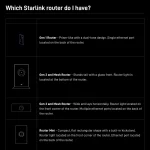Virgin Media O2 Integrate Neutral Host Small Cell into Live UK 5G SA Network

O2 (Virgin Media) has partnered with IONX Networks to become one of the first mobile operators in the UK to successfully integrate a neutral host Small Cell into their live 5G Standalone (SA) core network, which supports the ongoing expansion of their new ultrafast mobile broadband service (currently available to more than 70% of the population).
Just to recap. 5GSA networks are pure end-to-end 5G connections that can deliver ultra-low latency times, greater energy efficiency, better speeds (particularly uploads), network slicing, improved support for IoT devices, increased reliability and more. Unlike older Non-Standalone (NSA) 5G networks, they don’t have any legacy 4G in the mix to slow them down.
Meanwhile, Small Cells are mini shoebox sized mobile (radio) base stations, which are designed to deliver limited coverage (usually up to around 100 metres) and thus tend to be more focused on busy urban areas and specific sites – it’s not uncommon to find these sitting on top of lampposts, CCTV poles or even inside buildings to boost mobile coverage.
Advertisement
Sadly, today’s announcement from IONX Networks doesn’t tell us anything about where their Neutral Host (i.e. a network that mobile operators or other communications providers can then buy access to via wholesale) based Small Cell has been deployed within O2’s national network. But the fact it’s a Neutral Host setup means that rival operators may also be able to harness it, once a deal is done.
Rob Joyce, Director of Mobile Access Engineering at VMO2, said:
“At Virgin Media O2, we have the largest 5GSA of any operator and are focused on bringing it to more locations through our £700m Mobile Transformation Plan. This neutral host approach supports our mission to densify 5G in a scalable, cost-effective way — bringing the power of 5GSA to more people.”
The new deployment is said to follow the UK’s wider Joint Operator Technical Specifications (JOTS) framework, while also adopting a unified, software-defined architecture supporting both MORAN (Multi-Operator RAN) and MOCN (Multi-Operator Core Network) features.
Mark is a professional technology writer, IT consultant and computer engineer from Dorset (England), he also founded ISPreview in 1999 and enjoys analysing the latest telecoms and broadband developments. Find me on X (Twitter), Mastodon, Facebook, BlueSky, Threads.net and Linkedin.
« October 2025 Progress Update on BT 10Mbps UK Broadband USO
Advertisement
Leave a Reply Cancel reply
Privacy Notice: Please note that news comments are anonymous, which means that we do NOT require you to enter any real personal details to post a message and display names can be almost anything you like (provided they do not contain offensive language or impersonate a real person's legal name). By clicking to submit a post you agree to storing your entries for comment content, display name, IP and email in our database, for as long as the post remains live.
Only the submitted name and comment will be displayed in public, while the rest will be kept private (we will never share this outside of ISPreview, regardless of whether the data is real or fake). This comment system uses submitted IP, email and website address data to spot abuse and spammers. All data is transferred via an encrypted (https secure) session.






















































Yet o2 and Vodafone can’t give me a signal in my house on 900 MHz which is less than 600m from their base station but report everything is fine.
If it has line of sight and helps improve coverage then great.
I was with Virgin Mobile for approx 15-20 years (since around the time they became “virgin mobile”. Never had a problem.
They merged with O2 and transferred all the contracts over, suddenly my signal was trash at all times, all of the “lifetime” double/triple data bonuses on my account were removed, they screwed up my bills multiple times. I bought a new phone from them, they sent one with a very small crack on the screen, instead of sending a replacement they insisted the only option was to leave me without a phone for between 2 weeks and 2 months while they processed a repair, I obviously refused. Then they spent 6 months arguing about it and refusing to provide a refund.
Switched companies in the end. They still haven’t provided a refund, only written off the remaining amount due for the phone.
Most of the “new” tech they’re introducing here in UK is stuff which has been around for a while but the licensing for installation new mobile equipment in the UK is long and convoluted, so it gets heavily delayed more often than not.
They recently turned on the new 5g mask in my village… It has lower throughput than their 4g tower.